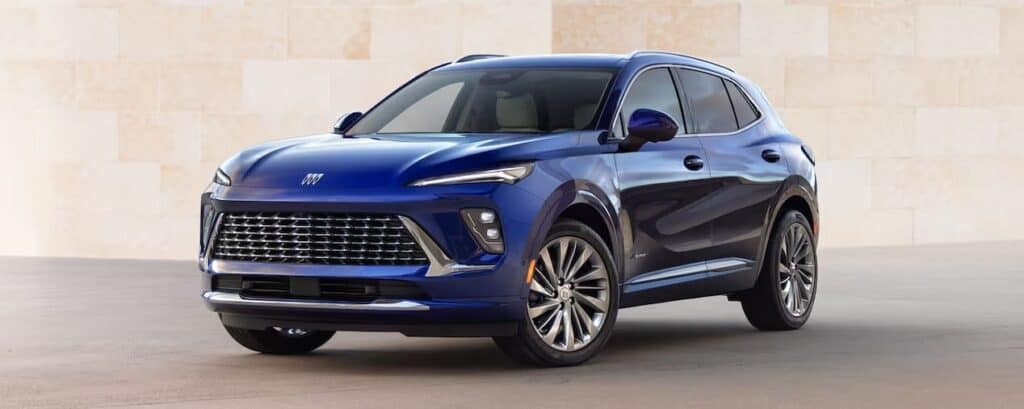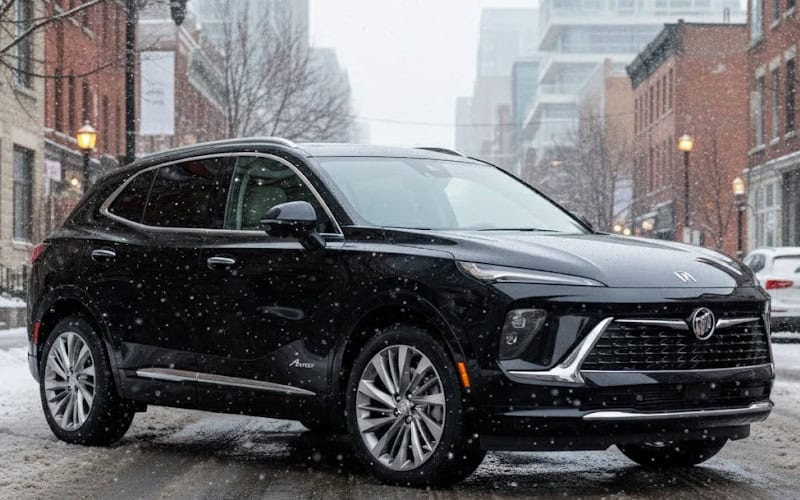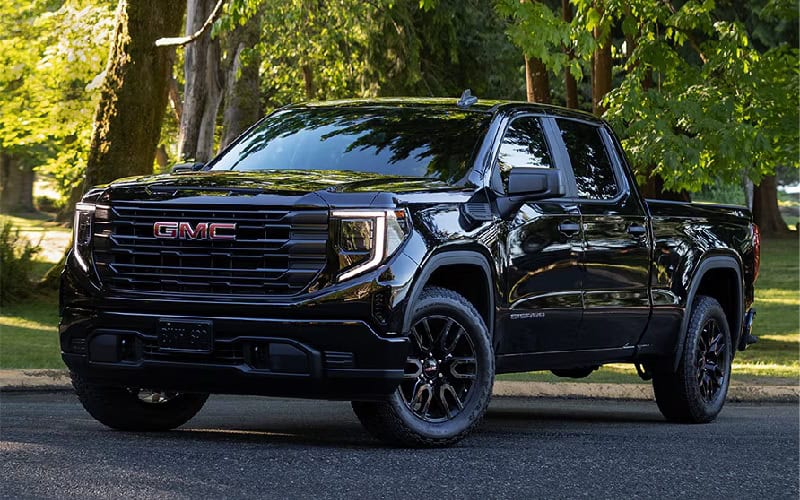AEB in the Buick Envision: An Overview
In the realm of automotive safety, few technologies have made as significant an impact in recent years as Automatic Emergency Braking (AEB). This advanced driver assistance system has become a cornerstone of modern vehicle safety features, and the Buick Envision stands as a prime example of how luxury SUVs are incorporating this life-saving technology. In […]
In the realm of automotive safety, few technologies have made as significant an impact in recent years as Automatic Emergency Braking (AEB). This advanced driver assistance system has become a cornerstone of modern vehicle safety features, and the Buick Envision stands as a prime example of how luxury SUVs are incorporating this life-saving technology. In this comprehensive overview, we’ll delve into the intricacies of AEB in the Buick Envision, exploring its functionality, benefits, and role in shaping the future of automotive safety.

Understanding Automatic Emergency Braking
Before we focus specifically on the Buick Envision, it’s crucial to understand what AEB is and how it functions. Automatic Emergency Braking is a safety system designed to detect potential frontal collisions and automatically apply the brakes to prevent or mitigate the impact. This technology uses a combination of sensors, typically radar and cameras, to constantly monitor the road ahead and assess the risk of a collision.
The primary goal of AEB is to reduce the frequency and severity of rear-end collisions, which account for a significant portion of road accidents. By intervening in situations where the driver may be distracted or unable to react in time, AEB serves as a crucial safety net, potentially saving lives and preventing injuries.
AEB as a Standard Feature in the Buick Envision
One of the most noteworthy aspects of the Buick Envision’s safety package is the inclusion of AEB as a standard feature across all recent models. This commitment to safety underscores Buick’s dedication to providing cutting-edge protection for its drivers and passengers. By making AEB standard rather than an optional extra, Buick ensures that every Envision on the road is equipped with this potentially life-saving technology.
The decision to standardize AEB in the Envision aligns with a broader industry trend toward making advanced safety features more accessible. It also reflects growing consumer demand for vehicles that offer comprehensive protection against a wide range of potential hazards on the road.
How AEB Works in the Buick Envision
The AEB system in the Buick Envision is a sophisticated piece of technology that operates through a series of carefully orchestrated steps:
- Constant Monitoring: The system uses forward-facing sensors, typically a combination of radar and cameras, to continuously scan the road ahead. These sensors are capable of detecting vehicles, pedestrians, and other obstacles that may pose a collision risk.
- Risk Assessment: Advanced algorithms process the data from the sensors in real-time, calculating the distance to objects ahead and the relative speed between the Envision and potential obstacles.
- Initial Warning: If the system detects a potential collision risk, it first alerts the driver through visual and audible warnings. In the Envision, this might include a flashing light on the dashboard or heads-up display, accompanied by a warning sound.
- Brake Preparation: Simultaneously with the warning, the AEB system prepares the brakes for rapid application. This may involve moving the brake pads closer to the rotors or increasing hydraulic pressure in the braking system.
- Automatic Braking: If the driver doesn’t respond to the warnings by applying the brakes or steering to avoid the obstacle, the AEB system will automatically apply the brakes. The force of braking is typically proportional to the urgency of the situation, with maximum braking force applied in critical scenarios.
- Post-Collision Actions: In the event that a collision does occur despite the system’s intervention, the Envision’s AEB may keep the brakes applied to prevent secondary collisions and activate other safety systems like airbags and seat belt pre-tensioners.
Integration with Buick’s Safety Suite
The AEB system in the Buick Envision doesn’t operate in isolation. It’s an integral part of a comprehensive safety suite that includes other advanced driver assistance systems (ADAS). Some of these complementary features include:
- Forward Collision Warning: Works in tandem with AEB to provide early alerts of potential frontal collisions.
- Lane Departure Warning and Lane Keep Assist: Help prevent accidents caused by unintentional lane drifting.
- Adaptive Cruise Control: Maintaining a safe following distance from the vehicle ahead can help prevent situations where AEB might need to intervene.
- Pedestrian Detection: An advanced feature of some AEB systems that can identify and react to pedestrians in the vehicle’s path.
The seamless integration of these systems creates a multi-layered approach to safety, with AEB serving as a critical last line of defence.
Performance and Limitations
While the AEB system in the Buick Envision is highly advanced, it’s important to understand both its capabilities and limitations:
Effective Speed Range
The AEB system in the Envision is most effective at lower to moderate speeds, typically up to about 50 mph for vehicle detection and lower speeds for pedestrian detection. The system may not be able to prevent a collision at higher speeds but can still significantly reduce the impact speed.
Weather and Environmental Factors
Like all sensor-based systems, the performance of AEB can be affected by adverse weather conditions such as heavy rain, snow, or fog. These conditions can reduce sensor visibility and may impact the system’s ability to detect obstacles accurately.
System Limitations
It’s crucial for Envision drivers to remember that AEB is not infallible. The system may not detect all obstacles, especially in complex traffic scenarios or when objects suddenly enter the vehicle’s path. It’s designed as a support system, not a replacement for attentive driving.
Driver Interface and Customization
The Buick Envision provides drivers with some level of control over the AEB system:
- Sensitivity Settings: Drivers may have the option to adjust the sensitivity of the system, determining how early warnings are issued.
- System Deactivation: While not recommended, there is typically an option to deactivate the AEB system if desired.
- Information Display: The vehicle’s infotainment system often provides detailed information about the AEB system’s status and any detected warnings.
Maintenance and Care
To ensure optimal performance of the AEB system in the Buick Envision, regular maintenance is essential:
- Sensor Cleaning: The sensors, typically located in the front grille and windshield, should be kept clean and free from obstructions like snow, mud, or debris.
- Regular Checks: The AEB system should be checked for proper functionality during routine vehicle maintenance.
- Software Updates: Occasionally, Buick may release software updates for the AEB system to improve performance or address any identified issues.
The Impact of AEB on Safety
The inclusion of AEB in vehicles like the Buick Envision has had a measurable impact on road safety. Studies by organizations such as the Insurance Institute for Highway Safety (IIHS) have shown that vehicles equipped with AEB experience significantly fewer rear-end collisions compared to those without the system.
For the Buick Envision specifically, the presence of AEB as a standard feature has contributed to its high safety ratings. The vehicle has consistently received top marks in safety assessments, with AEB playing a crucial role in its performance in frontal crash prevention tests.
Looking to the Future
As automotive technology continues to evolve, we can expect to see further advancements in AEB systems. Future iterations in the Buick Envision and other vehicles may include:
- Improved Detection: Enhanced sensors and AI algorithms could improve the system’s ability to detect and respond to a broader range of obstacles and scenarios.
- Higher Speed Effectiveness: Advancements may allow AEB to be effective at higher speeds, further reducing the risk of high-speed collisions.
- Integration with V2X: Vehicle-to-everything (V2X) communication could allow AEB systems to react to dangers beyond the line of sight of onboard sensors.
Conclusion
The Automatic Emergency Braking system in the Buick Envision represents a significant leap forward in vehicle safety technology. By providing a crucial layer of protection against one of the most common types of collisions, AEB has the potential to save countless lives and prevent injuries.
However, it’s important to remember that while AEB is a powerful safety tool, it is not a substitute for attentive driving. The most effective approach to road safety combines advanced technologies like AEB with alert, responsible driving practices.
As Buick continues to refine and improve the AEB system in the Envision, drivers can look forward to even higher levels of safety and peace of mind. The standardization of this technology across the Envision lineup demonstrates Buick’s commitment to safety and positions the vehicle as a leader in its class when it comes to protecting drivers, passengers, and others on the road.
In the end, the inclusion of AEB in the Buick Envision is more than just a feature—it’s a testament to the ongoing revolution in automotive safety, where technology and innovation come together to create safer roads for everyone.


